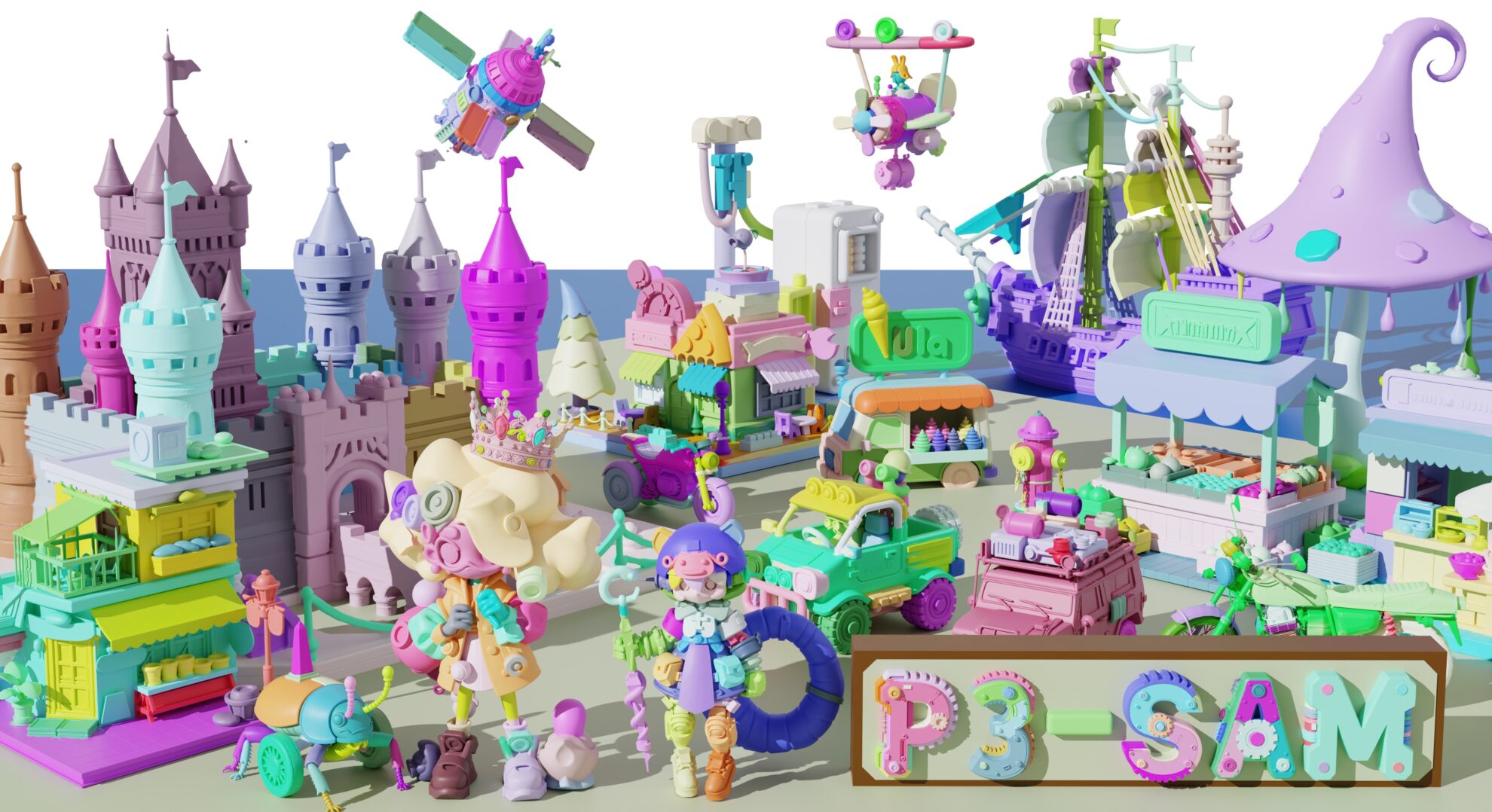Hunyuan3D-Part: Component-based 3D Generative Model
1. Tutorial Introduction


Hunyuan3D-Part is a 3D generative model launched by the Tencent Hunyuan team in September 2025. It consists of P3-SAM and X-Part. It realizes high-precision and controllable component-based 3D generation for the first time and supports automatic generation of 50+ components. Users can first use Hunyuan 3D 2.5 or 3.0 to generate the overall Mesh, and then use P3-SAM to automatically and accurately segment the components. X-Part decomposes it into independent parts and outputs high-fidelity, structurally consistent component geometry while maintaining flexibility and controllability. It has a wide range of applications in game modeling, 3D printing and other fields. For example, splitting the car model into a body and wheels makes it easier for games to bind scrolling logic or 3D printing step-by-step production. The relevant paper results are "P3-SAM: Native 3D Part Segmentation"and"X-Part: high fidelity and structure coherent shape decomposition".
The computing resources used in this tutorial are a single RTX A6000 card.
2. Effect display
P3-SAM:Native 3D part Segmentation

X-Part: high-fidelity and structure-coherent shape decomposition

3. Operation steps
1. Start the container

2. Usage steps
If "Bad Gateway" is displayed, it means the model is initializing. Since the model is large, please wait about 2-3 minutes and refresh the page.
Note: It takes about 1 minute for the browser to load and display the glb file. Please be patient.


Specific parameters:
- Post-processing: Whether to enable the post-processing step within P3-SAM.
- Post-processing Threshold: Takes effect when post-processing is enabled. This threshold controls the strength of merging. A smaller value (e.g., 0.8) means a lower requirement for similarity between parts before merging, resulting in more small parts being merged into adjacent large parts and fewer parts being retained. A larger value (e.g., 0.99) requires very similar parts before merging, resulting in a higher number of retained parts.
- Random Seed: Controls the randomness involved in the P3-SAM segmentation process (such as sampling points, color assignment, etc.).
4. Discussion
🖌️ If you see a high-quality project, please leave a message in the background to recommend it! In addition, we have also established a tutorial exchange group. Welcome friends to scan the QR code and remark [SD Tutorial] to join the group to discuss various technical issues and share application effects↓

Citation Information
The citation information for this project is as follows:
@article{ma2025p3sam, title={P3-sam: Native 3d part segmentation}, author={Ma, Changfeng and Li, Yang and Yan, Xinhao and Xu, Jiachen and Yang, Yunhan and Wang, Chunshi and Zhao, Zibo and Guo, Yanwen and Chen, Zhuo and Guo, Chunchao}, journal={arXiv preprint arXiv:2509.06784}, year={2025} }@article{yan2025xpart,
title={X-Part: high fidelity and structure coherent shape decomposition},
author={Yan, Xinhao and Xu, Jiachen and Li, Yang and Ma, Changfeng and Yang, Yunhan and Wang, Chunshi and Zhao, Zibo and Lai, Zeqiang and Zhao, Yunfei and Chen, Zhuo and others},
journal={arXiv preprint arXiv:2509.08643},
year={2025}
}
Build AI with AI
From idea to launch — accelerate your AI development with free AI co-coding, out-of-the-box environment and best price of GPUs.